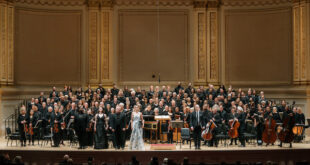Kingston, Ontario Canada is a small town at the convergence of three major waterways; Lake Ontario, the St. Lawrence River, and the Cateroqui River. (This becomes the Rideau Canal, connecting Lake Ontario to Ottawa,Ontario) Ideally situated at the half way points between Montreal, Ottawa, and Toronto, one would assume that it would play some significant role in life along the St. Lawrence seaboard.
Ever since it was stripped of its title of capital of Canada in the 1850’s, there has been a steady downward progression to its fortunes. (After the War of 1812, and with continuing war like sounds emanating from the America’s, the forty-five miles from the border to Kingston was considered too close for comfort and the capital was switched to Ottawa.) With no deep water port to attract the shipping that wended it’s way down the river, Kingston could only sit and watch the big lake boats sail past with the opening of The St. Lawrence Seaway.
In fact, the only traffic that came to Kingston through the St. Lawrence were the poor Irish immigrants imported to dig the canal to Ottawa. Those that were dropped in Kingston were either dead or dying of Typhoid. The survivors and their descendants have formed the nucleus of Kingston’s labour pool up until present day.
Up until their arrival, Kingston had been primarily a garrison town. First settled by the French who called it Fort Frontenac, upon New France’s conquest in 1759 it was turned over to the British. In the period directly following the American revolutionary war, the population was increased by an influx of “Loyalist” soldiers and their families.
Anyone who served the crown during that period was rewarded with the gift of land in and around the St Lawrence River. This served the dual purpose of paying people back for their loyalty and quickly populating a precarious border. These people would form the backbone of British North American resistance in the War of 1812.
The United Empire Loyalists, as these people came to be known, had sixty years to settle and establish themselves before the poor Irish turned up. Prosperous, protestant, professionals do not mix well with Irish Catholic unskilled labour. Social and religious class distinctions from the Old World made a much more successful immigration than most of the poorer refugees.
Contemporary Kingston maintains those divisions. In fact, if anything, the social economic split of the city has increased with the passage of years. As the need for unskilled labour decreased, and Kingston has increased its dependence on service industry jobs, employment opportunities for the descendants of the canal diggers have evaporated.
In 1990, I migrated to Kingston with the two-fold purpose of escaping the big city madness of Toronto and opening a theatre company. One of the first things I became aware of was the almost tangible border that separated the two halves of the city. North and South of Princess St. was a designation of social standing.
The same house, one block either direction away from Princess St., represented about a $50,000 swing in property value. North from Princess to the highway was the home of the hardscrabble poor. Welfare moms, addicts, ex-cons, and the working poor predominated. Southwards, the homes of the professional classes and old money grow steadily larger and more ornate as they approach the waterfront.
It’s on the south side that you’ll find all the historical plaques commemorating places the first Prime Minister of Canada slept, drank, or had an office. You can’t walk a block without seeing the name of Sir John A. MacDonald engraved on a wall or a door way.
When I had travelled down to visit with my business partner prior to moving, I had not been to Kingston for more then twenty years. As a kid on a school trip, all I had seen were historical sights. Needless to say, I was full of questions about what I was seeing. I was especially fascinated by what looked to be a version of Walt Disney World’s Magic Kingdom castle that dominated the western skyline.
Collins Bay Penitentiary, or the Magic Castle as its known by its inhabitants, may not have the nefarious reputation as the two other maximum-security prisons in the Kingston area (Millhaven and The Kingston Pen.) but it is still a nasty place. Did I mention that Kingston was a service industry town? Well part of its charm is whom it serves.
There are seven federal penitentiaries within a half hour’s drive of Kingston. Ranging from the minimum security Frontenac where prisoners are on their last stage before release to Kingston Penitentiary where notorious killers like Clifford Olsen and Paul Bernardo idle away the rest of their lives. There are probably more people involved in corrections work, directly or indirectly, per capita in Kingston than anywhere else in the world.
In contrast to life behind bars, Kingston also has one of the larger armed forces bases in Canada, The Royal Military Collage(R. M. C.) (officer training), Queens University, and St. Lawrence Collage. (In Ontario, with the exception of R. M. C. all collages are community collages) These four institutions plus the prisons most likely combine to form the backbone of the cities economy. One way or another nearly every business in town depends on them for their survival.
When we had entertained the idea of forming a theatre company in Kingston, we had realized that in order for it to be successful we needed to establish a direct connection to the people. We had the lofty idea of being a manifestation of Kingston theatrically. To do this we would have to discover what was behind the facade of gentility that Kingston presented to the world.
Out of these ruminations was born a concept for producing a genuinely populist form of theatre. It was important to us that this play could be accessible to anybody who lived in the city. We wanted to provide an accurate depiction of life in Kingston, without judging, and with the warts intact.
From previous experience my business partner and I both knew that the most important thing was to ensure the development of a good script. Although many people advocate a workshop type creative process where the actors improvise to create scenes from raw material, we both felt playwrights were required for this project. We approached two local men who happened to be established playwrights. One a professor at in the Queens University dram program and the other had just returned form a cultural exchange in Japan.
The means we had decided upon for the collection of information was to find a cross range of people who, as near as possible, reflected the diversity of Kingston’s population. We would ask each person to complete a simple questionnaire, and than write out their impressions of life in Kingston.
Once this material was gathered we gave copies of it to the actors and the playwrights. One of the things we realised that would be important was to try and find a story line that we could hang the images and impressions on. We didn’t just want to present a disjointed collection of scenes. Here we struck gold in the form of a lifer in Collins Bay Penitentiary.
Ironically he wasn’t from Kingston, and had yet to step foot in the city, but it was his recounting of his twelve years behind bars which provided the most complete story. With his wife, acting as intermediary (they had met at a co-ed university prison school, and were married when they were both still serving time by an inmate who had become an ordained minister during his sentence) one of the playwrights focused on scripting his information.
When we had the first rough script in shape, we invited the community participants to attend an initial staged reading to get their responses to the material. If they felt that their view was being misrepresented, or had been misunderstood, corrections would have to made. It was important to remember at all times that we were simply the vehicle that enabled their story to be told.
I’m sure I’ve made the process sound easy. In actuality, it was long and drawn out course of interviewing and re interviewing people. Rehearsals would go long into the night as we tried to figure out if we were superimposing ourselves over the information we had been given.
Finally, we had a script that was both satisfactory to our community representatives, and make for a good performance. The manner in which the stories were told, the artistic quality of the work, was equally as important as the material. If it sucked as a play, the accuracy of our information would be irrelevant.
One of the wonderful things about theatre is that you never quite realize the enormity of what you are taking on when you begin a project. At some point in the process it takes on a life of its own and threatens to grow beyond your control. Thankfully, there is the built in infrastructure of playwrights and directors to keep everything in check. Without them, the whole thing would inevitably collapse in on itself.
In a collaborative effort such as this one, it is even more important someone has the authority to say no. Theatre, like any art form, requires incredible discipline. The energies of vastly disparate people have to be focused in one direction. Without a common goal the work becomes pointless.
Somebody once said that an artist should hold up a mirror for society to look into, to see their reflection, the good and the bad. Our goal as a company was to be that mirror for our community. Kingston Ontario is not unique in its circumstances. I’m sure there are many cities of similar sizes with equally interesting stories.
If theatre is to remain a viable alternative to other forms of entertainment, than it needs to find a way to be relevant to its audience. It is the responsibility of those who have the authority, directors and playwrights mainly, to reach out to their communities and restore the historical connection between the theatre and the public.
A project like the one described in this article represents a tentative first step in that direction. More initiatives like it are needed if theatre wishes to survive as more than just the province of a small minority of society. At one time theatre was the way in which we told ourselves the stories that mattered. Maybe it’s time we returned to those roots, and acted out the stories that matter to our communities.
 Blogcritics The critical lens on today's culture & entertainment
Blogcritics The critical lens on today's culture & entertainment



